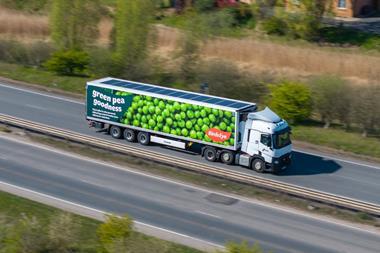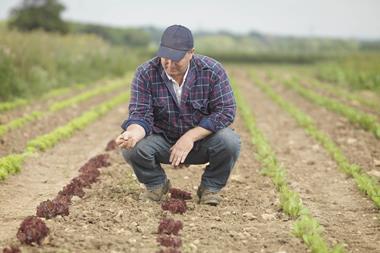The cost of throwing away good food and drink reached a staggering £13.7bn last year, according to the Local Government Association.
It lays the blame squarely at the door of the bogof, which it claims is a cunning ploy to divert waste out of retail operations and into the home. Is there any truth in its argument? Helen Gilbert reports
That promotional activity has reached record levels may be good news for consumers and retailers, but for suppliers it’s a different story. And they’re not the only ones alarmed by the number of deals on supermarkets shelves at the moment one type of deal in particular.
Earlier this month, the Local Government Association called on retailers to ditch bogofs in favour of price cuts, claiming that multibuys were behind the UK’s sky-high levels of food waste.
The type of promotions that give consumers just a few days to munch their way through 16 clementines were not about providing value for money, but a deliberate way of “transferring waste out of retail operations and into the family home”, claimed Clyde Loakes, LGA environment board vice-chairman.
His comments followed an LGA analysis that revealed the cost of buying and throwing away good food and drink hit £13.7bn last year. But are retailers really to blame for this food waste mountain or is the LGA simply trying to shift the focus away from local authorities and their waste disposal responsibilities?
The LGA’s argument is simple. Aggressive promotions on perishable goods like fruit, veg, dairy and meat encourage households to buy more than they can actually consume so they end up throwing lots 0ut. Multibuys should therefore be replaced with discounts on individual lines, which offer customers the same value without encouraging over-buying, says the LGA.
More ambitious waste reduction goals should be set for supermarkets to force them to raise their game, it adds.
“Millions of tonnes of food a year are wasted due to the bogof,” claims Loakes. “It enables them to buy in bulk cheaply and offload waste cheaply so the cost of disposal falls on local councils and residents. This is a scandal. It’s making our residents take their waste home with them. Millions of people around the world are starving and we are in this cycle where supermarkets think it’s OK to sell excess food to residents who end up throwing it away because they don’t need it.”
Supermarkets need to take more responsibility, adds Loakes. “They are never prepared to make the real, bold step.”
The supermarkets themselves would beg to differ and encouragingly, figures from Wrap back up their claims they are taking decisive action. Results of the first phase of the Courtauld Commitment unveiled last September revealed that signatories had far exceeded the target to reduce food waste by 155,000 tonnes per year producing 270,000 tonnes less food waste a year in 2009/10 than in 2007/8.
Altogether, a total of 670,000 tonnes of food waste and 520,000 tonnes of packaging were avoided across the UK between 2005 when the agreement was signed and 2009, according to the figures. And while the LGA argues that the total amount of packaging waste being produced each year since 2005 has remained the same, both Wrap and the BRC are quick to point out that during that time there has actually been a 6.4% increase in grocery sales.
“Our commitment was always to level the packaging on the market and we achieved that, despite sales going up,” says Bob Gordon, BRC head of environment. “Keeping packaging waste at the same level is a great achievement. If we hadn’t done that work there would have been 550,000 tonnes more because of an increase in sales.”
Gordon disputes the suggested link between promotions and the estimated 8.3 million tonnes of food and drink waste generated by households every year. “Let’s give shoppers the credit they deserve. Customers are smart and know how to make the most of deals, which work for them. There’s no evidence that the food ending up in landfill is a result of promotions.”
Consumers need promotions such as bogofs in today’s market, he says. “Forty per cent of groceries going through tills are on promotion or special offer that’s a record high,” he points out. “The traditional bogof has moved with the times people can often choose their free item from a range of goods.”
Tesco agrees bogofs are a vital part of the retail mix at the moment, but adds that it is conscious of the potential for additional waste and prepared to act if necessary.
“Customers really like our bogofs and in the current economic climate it’s important we continue to give them a great value offer as well as helping them be green,” says a spokesman. “That’s why, last year, we trialled a new offer ‘buy one, get one free later’ on perishable products including salad, melon and pineapple. This allowed customers to pick up their free product the following week when they needed it, keeping waste down.”
Even if bogofs do generate waste, it is at nowhere near the levels the LGA claims, add retailers, and, they point out, such deals are just as likely to be found on long-life goods as perishable ones, lessening the likelihood of waste. “Our bogofs are usually on ambient foods with long shelf lives and can therefore be safely stored until the consumer is ready to use them,” a Morrisons spokesman says.
Some of the biggest causes of household food waste are poor food storage knowledge for example keeping bread in the fridge even though it causes it to go stale faster; buying more food shopping than is needed; and confusion over food date labels (see boxout left), he adds.
Waitrose adopts a similar line. “We focus our bogofs on long-life goods that people can store and use over a long period of time, such as nappies, dishwasher tablets and toiletries,” a spokeswoman says.
The real issue, contends Gordon, is the current way in which household waste is collected which doesn’t exactly encourage consumers to improve their ways. “One of the most effective ways to help customers reduce waste is for councils to collect it separately so it can be turned into compost or helped to biodegrade. As soon as it becomes visible, people can admit they are wasting food. We would support a greater roll-out of segregated waste.”
As for the LGA’s calls for more onerous waste reduction targets to be set, the supermarkets insist they are already doing all they can to tackle the problem. “Morrisons has already set itself very ambitious targets,” the spokesman says.
“We are building on the success of our waste prevention and management programmes and have set two challenging targets to commit to further progress zero waste direct to landfill from stores by 2013 and a 10% packaging reduction in the environmental impact of our own-brand packaging by 2012.”
Waitrose is also committed to reducing the amount of waste produced in its branches. “We have diverted more than 50% of our operational waste away from landfill through initiatives including sending waste to anaerobic digestion,” says the spokeswoman. “We are on track to meet our target of recycling 75% of our operational waste by the end of 2012 and diverting 95% from landfill by 2013.”
Tesco, too, claims it is meeting its own stringent waste reduction targets and adds that it now diverts all its waste away from landfill. Indeed, all the waste produced in its 2,315 stores and distribution centres in the UK is processed by waste treatment facilities of some sort, it says. Left over meat, for instance, is used to generate fuel for electricity through a third-party plant before powering its Widnes depot. About 5,000 tonnes of waste meat generates about 2,500MW hours of renewable electricity. Meanwhile, cooking oil and chicken fat from rotisserie counters and staff restaurants are turned into biodiesel helping to power its Accrington store.
Asda wouldn’t be drawn into the debate as it doesn’t offer bogofs, its attention instead being on EDLP, x-for-y deals and rollbacks, but it is one of many major industry players that have been participating in an IGD industry workgroup over the past 18 months to reduce product and packaging waste across the supply chain.
Retailers have been making good headway, agrees Wrap. “Bringing together major players, including all the big supermarkets, and drawing on our combined expertise, is really helping householders put less packaging and food waste in their bins,” chief executive Liz Goodwin said when the results of phase one of the Courtauld Agreement were unveiled. “We’re especially pleased with the food waste reduction, which is way beyond target.”
As for the retailers, they insist that they’ll continue to focus on reducing their own waste and educating consumers on how to cut theirs. But getting rid of the bogof? Bog off.
So what is to blame? Ministers are working with industry on guidance to clear up some of the confusion around best-before and sell-by dates in a bid to crack down on the food waste mountain.
According to Wrap, at least 60% of the 8.3 million tonnes of UK household food and drink waste is avoidable. And it has identified confusion over date labelling as one of the major causes for the huge amounts of waste.
Morrisons has published information to help end the confusion between best-before and use-by dates, while Asda has been examining the issue, according to a spokeswoman.
“We are an active partner in a group set up with the Food Standards Agency and Wrap reviewing date codes to ascertain whether greater shelf life can be given to certain products by moving them from use-by to best-before codes,” she says.
Supermarket tips to help shoppers reduce waste
Morrisons: launched its Great Taste, Less Waste campaign two years ago to educate consumers. Tips include helpful storage advice and ‘best kept’ stickers on produce, which show what to do to ensure it lasts longer and tastes better, as well as recipe cards and information to clear up confusion around best-before and use-by dates.
Tesco: has introduced a range of new products such as mini loaves to help consumers buy only the food they need. More storage instructions are being printed on packs of food and tips on reducing leftovers are provided on the Tesco magazine and on its website.
Sainsbury’s: last January held ‘Make the Difference Days’ focusing on food waste and encouraging customers and colleagues to ‘love their leftovers’. Three million food ‘wheels’ with tips to help transform leftover meat and veg with store cupboard staples were handed out. Two million food storage boxes to help keep leftovers fresh along were also given away.
Waitrose: is providing clearer information on the preparation, cooking and storage of its own-label products, giving greater prominence to date codes and ensuring its packaging maximizes shelf life. Where possible it indicates the total number of servings per pack.
Asda: doesn’t do bogofs, but to help consumers reduce household waste, it provides resealable packs of cheese that keep the cheese from drying out and offers single-portion packs of pasta and sauces, which help consumers avoid throwing excess away.



















No comments yet